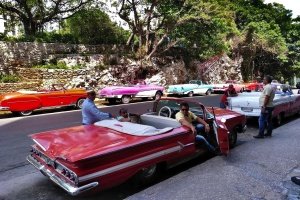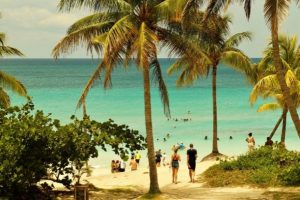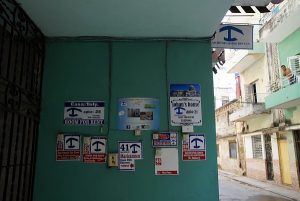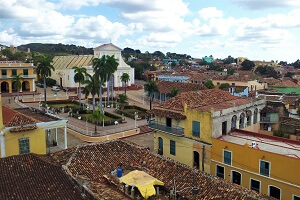El Vedado
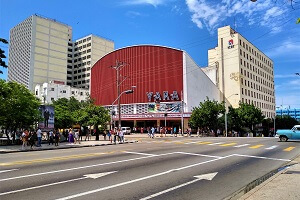
Updated: Dec 19, 2022

Updated: Dec 19, 2022
Most visitors to the Cuban capital spend most or even all of their visit in the Centro Habana and Habana Vieja neighborhoods. The district of El Vedado corresponds less to the stereotype of ramshackle Cuba, but is equally worth a visit. Characterized by modern high-rises and luxurious mansions, the district is still the political and cultural center of Cuba. The neighborhood contrasts with the historic center, which has been neglected for decades, and dominates Havana's international image.
El Vedado is sometimes referred to as the new Havana. The district is a fashionable residential and commercial area that provides an impression of the prosperity and progress that existed in Havana in the first half of the 20th century. In contrast to the older districts of Centro Habana and Habana Vieja, modern high-rises and leafy streets with imposing buildings can be encountered here.
History: American Made
The history of the district starts during the American occupation and influence period at the end of the 19th and beginning of the 20th century. During this era, the city experienced a strong economic boom accompanied by a strong population growth, which caused the city to expand beyond its old borders. In the former city forest, a new district was created within a few decades. Consequently, most of the buildings of the Vedado date back to the first half of the 20th century.
At that time, Cuba had a gross domestic product comparable to that of industrialized countries, but its distribution was extremely uneven. While extreme poverty prevailed in many rural areas, in Havana, and especially in Vedado, there was a concentration of wealth. The prosperous citizens made the city one of the most elegant of the time.
The district still has not only a special character, but is also the undisputed cultural and political center of Cuba. Vedado is home to various radio and television stations, ministries and international institutions. These include a number of embassies and the most prestigious and oldest university in the country, the Universidad de la Habana, wich was established in 1728.
­
The neighborhood of El Vedado
El Vedado was drafted on the drawing board. The design follows the basic grid pattern typical of the U.S., with streets named with numbers and letters. The district is bounded on the east by Centro Havana, on the north along the Atlantic Ocean by the extended Malecón, and on the west by the Almendares River.
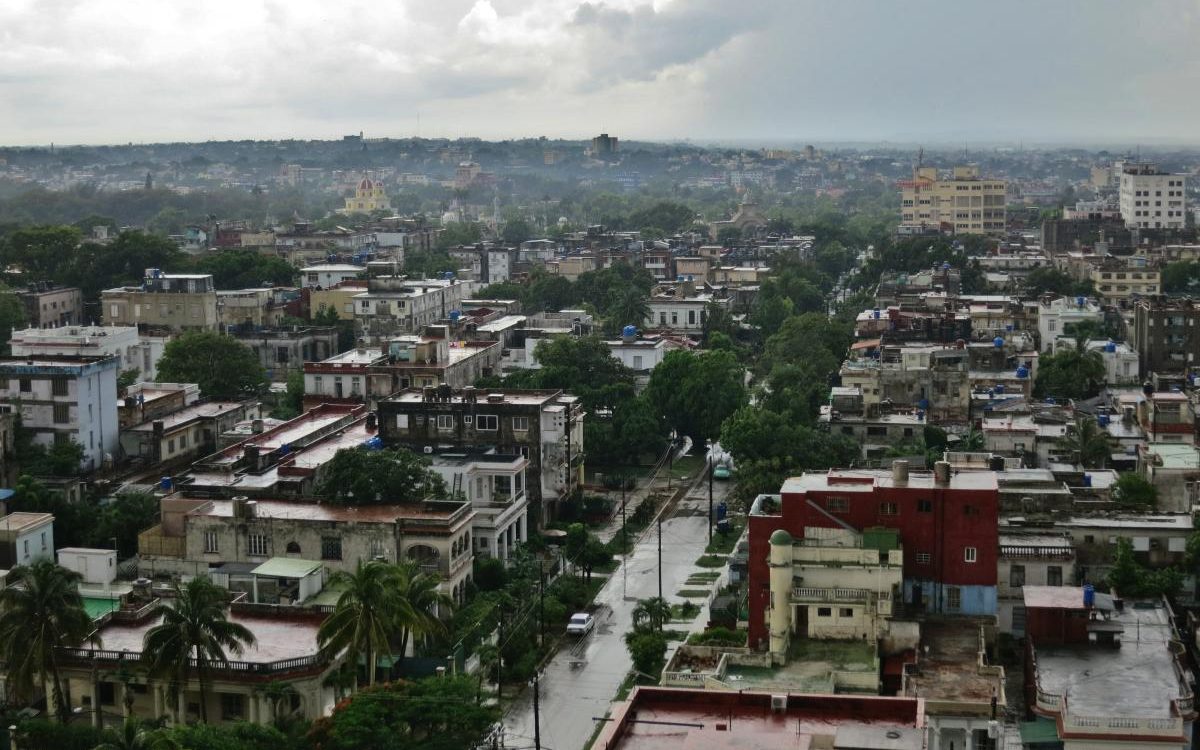
Vedado 2018
On the eastern tip, near the Malecón, there are a number of high-rise buildings dating from the 1940s and 50s. This area is also home to several large hotels constructed during the same period. Further west, some imposing estates follow, whereby especially the two boulevards Avenida de los Presidentes and Paseo give an impression of the former prosperity.

Villa at Paseo
Two main roads run through the district: The Linea Street and the 23rd Street (Avenida 23). At the eastern end of Avenida 23 lies La Rampa, which establishes the new center of the city. In that area around La Rampa an important part of the vibrant nightlife of the Cuban capital also takes place.
­
Sights
Im Vedado befinden sich einige der bedeutendsten Sights Havanas. Hierzu zählen etwa das geschichtsträchtige Hotel Nacional de Cuba, der riesige Friedhof Colón und nicht zuletzt der Plaza de la Revolución. Einen Overview über alle wichtigen Sights im Vedado gibt folgende Übersicht:
Highlights
- The Plaza de la Revolucion is the largest inner-city square in Cuba; It is used to hold large-scale events and official political rallies. On special occasions, Fidel Castro often spoke in front of more than a million people. In the vicinity of the square are the National Library and several ministries. The building of the Ministry of Interior is decorated with a large image of Che. The Ministry of Information standing next to it features the national hero Camilo Cienfuegos. In the center of the square is the José Martí Monument, consisting of a statue nearly 20 meters tall and a tower more than 100 meters in high. On top of the tower is a viewing platform that can be reached by elevator. If you want to go to the tower, you have to pay 4 USD entrance fee.
- The Hotel Nacional de Cuba was first opened in the 1930s and today belongs to the national monuments. The eight-story building is located in an exposed position, somewhat elevated above the Malecón. This provides beautiful views of the city and ocean. In the 1940s, the American mafia held a congress in the hotel, known as the Havana Conference. Later, mobster Meyer Lansky installed one of the most successful casinos on the entire continent in the building. Non-hotel guests can visit the imposing lobby and the beautiful garden of the building. From the garden you have an unforgettable view over the Malecón. In addition, there is a bar in the garden that invites you to linger. A daily guided tour is offered at 9 a.m., during which you can visit a suite and also a lookout tower, among other things.
- The Universidad de La Habana dates back to the beginning of 1728. Thus, it is one of the oldest universities in the Americas. In the district of Vedado are the most important faculties and also the main campus located. The beautiful main buildings with the imposing staircase and the park-like gardens - in the center is the Plaza Cadenas - is worth a visit, and access is free.
- The Cementerio Cristóbal Colón - Christopher Columbus Cemetery - is a Catholic cemetery in Havana. The cemetery is considered one of the most beautiful in the New World. It is popularly visited by Cubans and tourists. It has been counted among the national monuments since 1987. The cemetery has an area of about 56 hectares, where more than one million people were buried. The road network of the cemetery covers about twenty kilometers. The largest and most magnificent tombs and mausoleums are located in the center of the cemetery. The main entrance is located at the end of 12th Street. Foreigners must pay an entrance fee of 5 CUC to visit. For those who like cemeteries, the small Chinese cemetery about five minutes walk from the Cementerio Colón is also recommended.
- The Habana Libre Hotel, dominating the city, was once the largest hotel in Cuba. It was opened in March 1958 as the Havana Hilton. Shortly after the revolution, it served as headquarters for the guerrillas. As early as October 1960, the government under Fidel Castro nationalized the hotel. Since 1996, it has been operated by the Spanish Meliá Group under the name Tryp Habana Libre. Non-hotel guests can visit the lobby and a restaurant ($$) and nightclub ($$) on the top floor.
Culture & People
- The Casa de las Américas is a prestigious Cuban cultural institute. Its goal is to promote the social and cultural exchange of Latin American art and culture. The Casa de las Américas awards, one of the oldest and most important literary prizes in Latin America. The institute is housed in an impressive Art Deco building.
- The Museo Nacional de Artes Decorativas is the most important museum in Vedado. In a magnificent mansion designed by French architects and opened in 1927, the museum was inaugurated in 1964. In the magnificent building, you can see more than thirty thousand exhibits from the 16th-20th centuries. The entrance fee is 3 USD.
- Just 10 minutes walk away from the big hotels stands the American Embassy. For a long time it was the permanent representation of the class enemy. The embassy was reopened only at the end of Obama's term in office, but is currently operated only on a skeleton staff. The Americans accuse the Cubans of ominous sonic attacks. The embassy and the square in front of the entrance - called Plaza de la Dignidad - have historical significance. Here, the Cuban government regularly organized large-scale events in support of the system. In addition, the 138 closely spaced flagpoles bear witness to the time when the flags of those states were hoisted here that considered the U.S. embargo to be contrary to international law and voted accordingly at the UN resolution. Originally, the poles were installed to block the view of an electronic board set up by the Americans to display statements critical of the system.
- The Coppelia has been Cuba's best-known ice cream place for at least as long as the feature film Fresa y chocolate has been released. The gigantic state-run facility serves subsidized ice cream of dubious quality. Frugalists who want to try the ice cream must expect a very limited supply and long lines. You can get better ice cream at Bin-Bon on La Rampa near the Malecon, but there are often long lines here as well.
More Sights
- Park John Lennon is a beautiful park. On one of the benches sits a life-size sculpture of the musician. The statue was inaugurated in 2000, 20 years after John Lennon's assassination.
- At the corner of 19th Street and B Street is one of Havana's most important farmers' markets. The market offers a wide range of vegetables, fruits, but also meat and fish. The prices are a little higher than in other markets, but the market is still a popular place to visit because it has a particularly wide range of products. If you want to visit an authentic and well-stocked market, this is the right place. You should come in the morning, the market closes quite early.
- The Torreón de la Chorrera is an old fortification originally built during the 17th century. It is located on a small headland in the bay at Malecón. On the ground floor there is a simple bar, but it is quite nice to sit in the open air on the terrace. Upstairs there is a nightclub, which is quite gloomy and poorly ventilated.
Avenues
- The street G also called Avenida de los Presidentes is one of two important boulevards in the district. The street is named after the statues of famous Latin American presidents that are located on the central strip. There is a large marble monument at the upper end of the avenue. It is dedicated to the second president of Cuba, José Miguel Gómez. He was an outstanding leader during the War of Independence. If you walk down, you will come across monuments to other South American leaders, which were all involved in their nation's fight for freedom. Among them are Salvador Allende of Chile, Benito Juárez of Mexico and, of course, Simón Bolívar of Venezuela.
- The Avenida Paseo is a wonderfully green boulevard in the heart of Vedado. It runs from the Plaza de la Revolución to the former mob hotel Reviera at the Maleco. Along its sides are many impressive estates, most of which were nationalized after the revolution. The avenue invites to a lengthy stroll.
­
Eat & Drink
To go out, there are a lot of nice places to eat and drink in Vedado. Most of the places are located in the area of the new center, near the big hotels. However, there are also a number of nice restaurants a little outside the center that are well worth a visit. Since the district is quite extensive, it is advisable to plan your visit.
Upscale ($$$)
- El Cocinero is one of the best restaurants in the city. Rumor says that it is run by Raul's daughter. It is popular with foreign diplomats working and living in Havana. The prices are quite high. In return, it offers an exclusive ambient. Alternatively, the beautiful roof terrace can be used as a bar in the evenings. The restaurant is located in the same building complex as the most famous nightclub in Cuba, the Fábrica de Arte Cubano, so that you may combine a visit.
- Where Fidel Castro once set up his command center, you can now dine in a chic atmosphere. From the top floor of the Habana Libre Hotel, one can enjoy a fantastic panoramic view of the city and the sea. The price level corresponds to western middle-class restaurants. Due to the breathtaking location, the restaurant is an ideal place for a superior lunch or dinner.
- In the center of Vedado, on 17th Street, not far from Avenida Paseo, you will find Los Naranjos. The restaurant has an elegant ambience, but the price level is quite high.
Medium ($$)
- The restaurant La Catedral (map) serves decent food at reasonable prices. It offers pleasant place tables both outside and in the air-conditioned interior. Inside there is also a small bar where you can have a reasonably priced drink. The place is an excellent choice for a casual lunch or dinner. If you come in the evening, however, you may have to wait, as the place is also popular with Cubans due to its reasonable price-quality ratio.
- If you want to eat in an original socialist restaurant, you can visit La Roca (map), not far from the big hotels. It was one of the few places where you could get consumable meals until a few years ago.
­
Nightlife
When it comes to nightlife in the Cuban capital, Vedado is undoubtedly the most important part of the city. In the area around La Rampa there can be found a number of charming bars, as well as several larger nightclubs and theaters. On weekends, the area at the intersection of the Malecón and La Rampa becomes crowded. In Havana, this is the main public place to go out, frequented by night owls of all types and ages. If you don't want to spend your evening like many Habaneros just along the Malecón, you can find the most important places to go out in Vedado in the following overview.
Bars
- The small Café Mamine (map) is located just a few minutes walk from the modern center of the city. In the lovingly furnished restaurant you can have breakfast, drink coffee or sip a cocktail in the evening in an artistic, alternative atmosphere. You can sit inside or outside in the open air. The staff is friendly, and the prices are moderate. On weekends, it is open until 1 am.
- The King Bar is popular with Cubans and foreigners. Restaurant during the day, nightclub with dance floor in the evening and at night. Open long hours. It runs more reggaeton and dance music, less salsa.
- The Efe Cafeteria has a more alternative décor, but is a popular place to visit. It is a restaurant during the day, but also a nightclub or bar in the evening. Quite a few foreigners can be found here. Live bands frequently perform here.
Rooftop bars
- The Flauta Magica Bar is located on the roof terrace at the 10th floor, with a decorative pool. From the roof you enjoy wonderful views over the city, the Malecon and the sea. It is a perfect place for a drink and to experience unforgettable sunsets. The entrance is a bit hidden, in a normal residential building, directly opposite the American Embassy. Medium price level (drink 3, food 15 CUC). Open daily until 4 o'clock. On weekends admission around 5 CUC Address: Calzada zw. L y M.
- The La Torre Penthouse Bar is located in the iconic Focsa, the tallest building on the island. Access through the lobby of the building. The state bar offers a phenomenal panoramic view of the entire city at a height of about 120 meters. Moderate prices. Restaurant less inexpensive (20 USD upwards). Attention usually strongly air-conditioned. Open daily until midnight. Address: Calle 17 entre M y N, Vedado, La Habana.
- On the top floor of the striking Habana Libre Hotel is El Turquino del Habana Libre. You can enjoy a fantastic view over the city and the sea in all directions. If you are lucky, you can see the roof being opened. The audience is a bit older, according to the age of the hotel guests. Live music and shows are often held. Salsa dancing is popular. Open daily until 3 o'clock. Cocktails cost 6 CUC. For hotel guests, the entrance is free. Those who are not guests must pay 10 USD entrance fee.
­
Accommodation
Within Vedado, most of the accommodations are located in the eastern part of the district, close to the Malecón and not too far away from Centro Havana. In this area are also some of the largest hotels of the Cuban capital located. Among these are the history-making 5-star Hotel Nacional de Cuba and the distinctive Tryp Habana Libre, wich was the former Hilton Habana. However, both of these hotels are somewhat, let's say, aged. In much better shape is the NH Hotel Capri, which features an appealing rooftop pool with fantastic views of the city and the sea. Around the corner, the Spanish NH chain operates another recently opened 4-star hotel, the Collection Victoria La Habana.
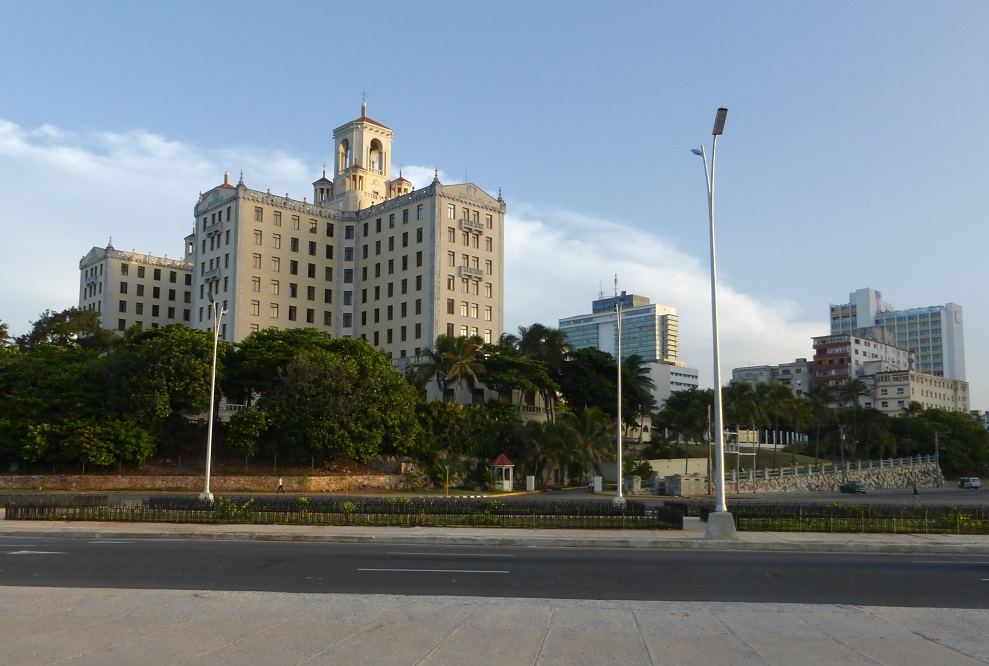
Hotel Nacional with Habana Libre & NH Capri in the background
In the area around La Rampa there are a number of other state-owned hotels, but none of them can be recommended. Among them are the Saint John's Hotel and the Hotel Colina.
A little further west, at the end of Avenida de los Presidentes, you will find the Hotel Presidente housed in a beautiful historic building. Even further west, and thus a bit more remote from most sights, the Spanish Meliá hotel group operates the 5-star Meliá Cohiba. Just opposite the Meliá Cohiba stands the Iberostar Riviera, which was built in the late 1950s, with funds from Italo-American mobsters.
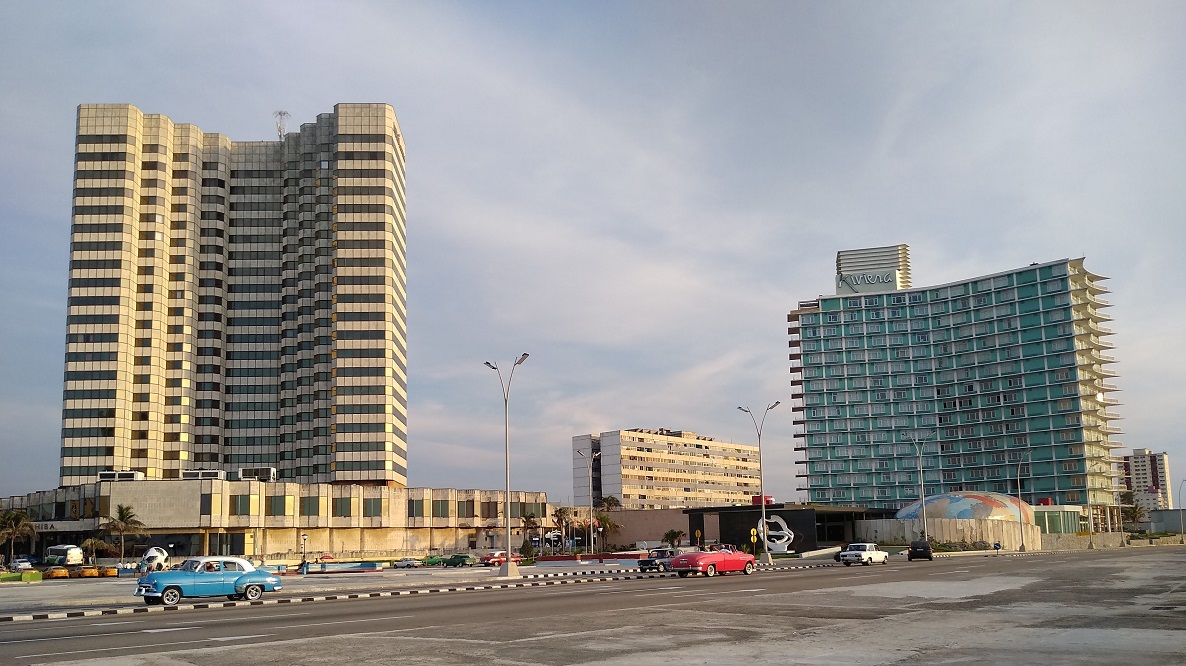
Meliá Cohiba & Iberostar Riviera
Besides hotels there are many private accommodations of various categories. A selection is shown in the following overview.
[ctu_ultimate_oxi id="102"]
